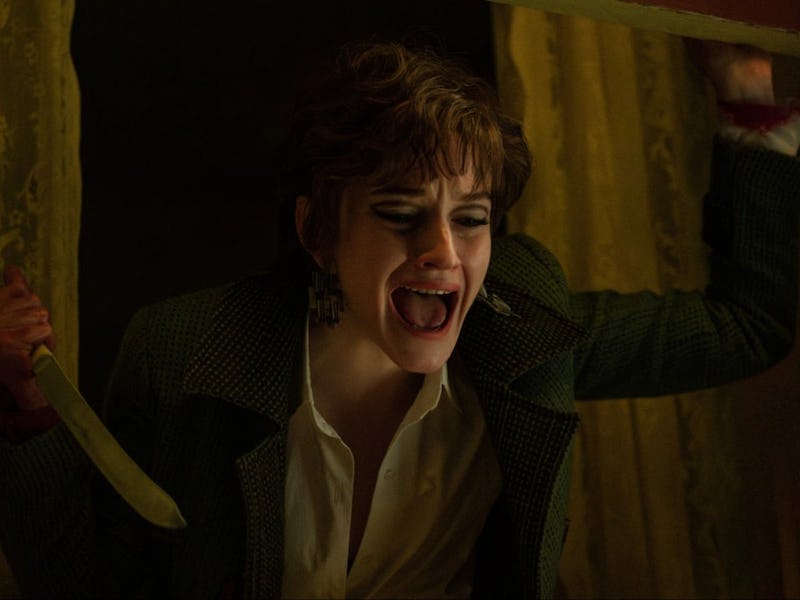Apartment 7A is the Rogue One of Horror Prequels
Welcome to the Bramford...

Let’s face it, most prequels are unnecessary and bad, answering questions we didn’t need answered while stripping the mystery out of our favorite stories. But horror might be the exception to the rule. In the last few years, horror prequels like Pearl, A Quiet Place: Day One, and The First Omen have all expanded the world of their source materials and made the original story all the more gripping — in most cases by offering a fresh look at a minor character from the original — and one recent horror prequel is taking that trend even further.
Streaming now on Paramount+, Apartment 7A is the Rogue One of horror prequels, cleverly redefining an all-time classic film. It offers an unflinching look at the characters who sacrificed themselves to make the first movie possible while bringing us all the way up to the opening moment of the original film. For Rogue One, that movie is Star Wars: A New Hope. For Apartment 7A it’s Rosemary’s Baby.
In Rosemary’s Baby, one of the first events that tips Rosemary and Guy Woodhouse off to the fact that something about their new apartment building, the Bramford, may be amiss is the sudden suicide of Terry Gionoffrio, the young woman Rosemary meets while doing laundry. Apartment 7A is all about Terry’s life, what brought her to the Bramford in the first place, and, most importantly, what led her to take her own life.
When we meet Terry in Apartment 7A, it’s one year before the events of Rosemary’s Baby. Teresa Gionoffrio (Julia Garner) is a young upstart Broadway dancer looking to graduate from the chorus line to the main cast, but a brutal injury during a production of Kiss Me, Kate halts her career. She goes back on the audition grind, but the lasting pain keeps her from booking roles. Desperate and popping painkillers, she follows a producer back to his apartment in the Bramford where she meets the Castevets: Minnie (Dianne Wiest) and Roman (Kevin McNally.)
What follows is the funhouse mirror version of the plot of Rosemary’s Baby. Much like Rosemary, Terry is drugged and impregnated. Just as Rosemary’s husband guy gets a lead role when the original actor is mysteriously blinded, Terry gets a lead in the Broadway show she’s in when the original actress has an injury suspiciously similar to her own.
Terry’s Broadway career gives the entire career the luscious stylization of a movie musical.
The biggest difference between the two is Terry’s insistence on finding her own way to the truth. She crawls through secret passageways and even consults a nun to find out why everyone is suddenly so interested in her pregnancy. Crucially, she finds out the secret before she gives birth, making her suicide not an act of depression but the only way she knows to defeat what is growing inside her.
But much like Rogue One, knowing the main character won’t live past the end credits, doesn’t make the journey there any less exciting. Julia Garner is the perfect 1960s scream queen, echoing the waifish vibe of Mia Farrow’s performance as Rosemary but with a decidedly 21st-century spunk that’s visible in her entire body of work.
Providing contrast is an equally strong performance by Dianne Wiest as Minnie Castevet, the role originated by character actress extraordinaire Ruth Gordon. Wiest isn’t doing a complete Gordon impression, instead creating a unique voice that’s half Ruth Gordon, half Rhea Perlman, and always fun to listen to.
Dianne Wiest in Apartment 7A.
The cinematography isn’t trying for a perfect impression, either. Roman Polanski’s original direction was groundbreaking, but Natalie Erika James managed to do something entirely fresh and new in Apartment 7A, using Terry’s Broadway dreams to inject a dose of the theatrical into this horror story. Terry’s hallucinations and mental breaks are shown through Fosse-influenced dance numbers and musical adaptation film techniques. On its own, it would be campy and cheesy, but Rosemary’s Baby came out in the last gasps of the movie musical Golden Age: it’s a natural choice.
Apartment 7A is the platonic ideal of what a horror prequel should do. It fleshes out a minor character and answers a few nagging mysteries from the original without feeling like an overt homage. It’s as fresh and new as Rosemary’s Vidal Sassoon pixie cut, a true companion piece, not an imitation.